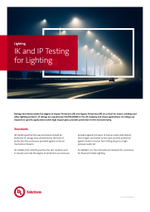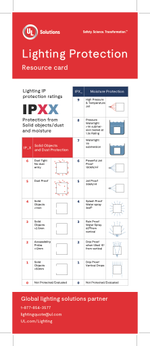
Global Lighting - English
Our technical experts deliver comprehensive lighting performance and energy efficiency testing services to meet the high standards of the lighting industry. UL Solutions’ technical experts can help you to better understand and demonstrate your product’s performance characteristics, efficiency and functionality, while meeting the requirements of national and international standards. We offer:
Our capabilities include, but are not limited to:

Global Lighting - English

Lighting Performance Testing and Certification Services

UL Marketing Claim Verification for Lighting

IK & IP Testing for Lighting Products

Lighting Protection Ratings Resource Card

AHL24CS1937730_StreetLightingMeasurements_Sellsheet_EN_US
Have questions, need specifics? Let's get this conversation started.